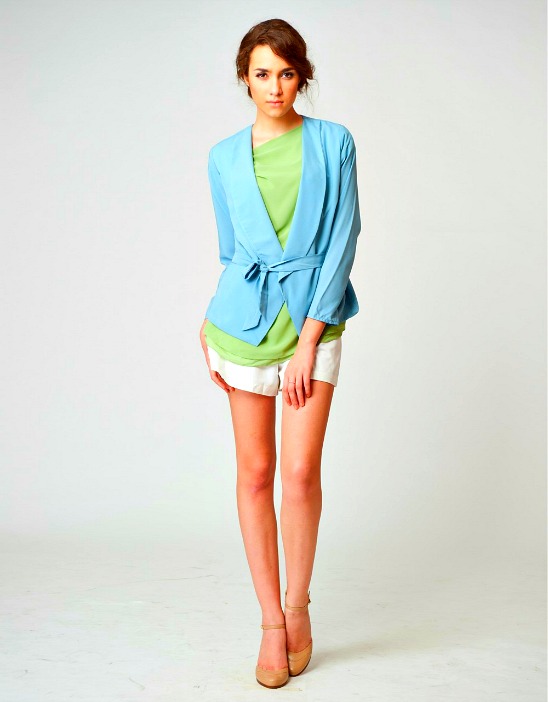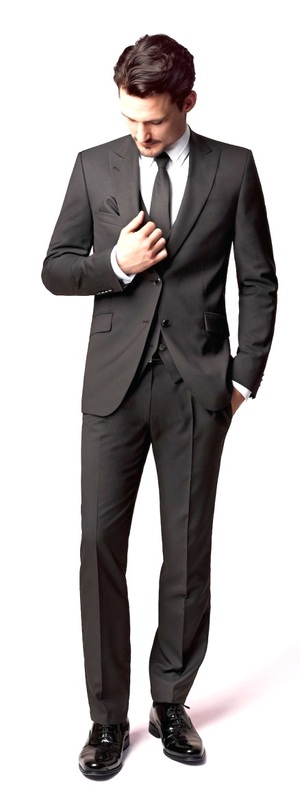By Jessica Chávez
Fashion Contributor
A new book by academic Giulia Mensitieri, laying bare the working conditions of stylists and young designers, has sparked controversy. Will it lead to improved conditions for those forced to work for clothes vouchers instead of cash?
Giulia Mensitieri takes little to no personal interest in clothes. So it is likely to have been an ugly surprise to the French fashion industry that her PhD – now a book entitled The Most Beautiful Job in the World – has opened up its secretive profession in such a dramatically public way. In France, the book’s findings – that fashion, the country’s second-biggest industry, exploits most of the creatives who work in it – were quickly picked up by the media when it was published earlier this year. The resulting headlines included: “The ruthless world of fashion”; “Fashion’s dirty underside”; and “An extremely wealthy industry founded on unpaid work”.
The reality of fashion was illustrated by Mensitieri’s chance introduction, eight years ago, to her subject matter. She met “Mia”, a successful Italian stylist who had moved to Paris: “She was wearing Chanel shoes and carrying a Prada handbag, being flown across the world in business class. I never would have imagined that she was in the situation she was in.” Mia couldn’t afford to rent a room, so she was couch surfing at a friend’s house behind a screen in the kitchen. “Sometimes she had no money for her phone bill. She was eating McDonald’s every day. She never knew when she would be paid for a job and how much she would get. For example, for a week’s work, a very big luxury brand gave her a voucher for €5,000 (£4,500) to spend in their boutique.” True, Mia could have sold it (and, among hard-up fashion workers, there is a lively market in reselling luxury goods). But Mensitieri points out that working in fashion means being seen in a constantly updated uniform of beautiful, expensive clothes and accessories – paid for by vouchers such as the one Mia received instead of a salary. “This situation is nothing exceptional. Mia is just a paradigm of what is going on.”
The book is lively from the start. Mensitieri’s analysis and case studies build up a fairly damning picture of her subject matter. One interviewee, a former fashion journalist at a glossy magazine, describes how she was dropped by her coterie of friends and colleagues one day. They just suddenly stopped taking her calls or responding to her emails. There was no explanation. “This is the violence everyone told me about,” says Mensitieri. “Once you’re out, you’re out.” There can be a trauma attached to such sudden ejection. “All your social relationships are in that world. They’re gone.” From being exceptional, now you have transgressed in some unmentionable way. Or, simply, you are not special enough any more. “Finding work in a new sector can be difficult because ‘normal’ people behave so differently from what you’re used to.” Finding a job can be difficult, coming from an industry that those on the outside tend to look down on as fluffy and lightweight.
Mensitieri, an alumnus of École des Hautes Études en Sciences Sociales, one of France’s elite grandes écoles, is in London to talk about her book, although it has not yet been translated into English. “I was a little bit scared when it came out,” she says, “because it’s quite a strong renunciation, even though that was not my goal. I’m an anthropologist, not a journalist.” The book’s salient claim is that, “when we think of exploitation in fashion we think of sweat shops abroad or sexual harassment of models. But that’s not what I was interested in. I was looking at the creative side: stylists, makeup artists, young designers, interns, assistants. What I really want to make clear is that exploitation exists at the very heart of the powerfully symbolic and economic centre of the maisons de couture; the big luxury brands. But it is a different form of exploitation.” In some cases, also barely legal.
Advertisement
Fashion Contributor
A new book by academic Giulia Mensitieri, laying bare the working conditions of stylists and young designers, has sparked controversy. Will it lead to improved conditions for those forced to work for clothes vouchers instead of cash?
Giulia Mensitieri takes little to no personal interest in clothes. So it is likely to have been an ugly surprise to the French fashion industry that her PhD – now a book entitled The Most Beautiful Job in the World – has opened up its secretive profession in such a dramatically public way. In France, the book’s findings – that fashion, the country’s second-biggest industry, exploits most of the creatives who work in it – were quickly picked up by the media when it was published earlier this year. The resulting headlines included: “The ruthless world of fashion”; “Fashion’s dirty underside”; and “An extremely wealthy industry founded on unpaid work”.
The reality of fashion was illustrated by Mensitieri’s chance introduction, eight years ago, to her subject matter. She met “Mia”, a successful Italian stylist who had moved to Paris: “She was wearing Chanel shoes and carrying a Prada handbag, being flown across the world in business class. I never would have imagined that she was in the situation she was in.” Mia couldn’t afford to rent a room, so she was couch surfing at a friend’s house behind a screen in the kitchen. “Sometimes she had no money for her phone bill. She was eating McDonald’s every day. She never knew when she would be paid for a job and how much she would get. For example, for a week’s work, a very big luxury brand gave her a voucher for €5,000 (£4,500) to spend in their boutique.” True, Mia could have sold it (and, among hard-up fashion workers, there is a lively market in reselling luxury goods). But Mensitieri points out that working in fashion means being seen in a constantly updated uniform of beautiful, expensive clothes and accessories – paid for by vouchers such as the one Mia received instead of a salary. “This situation is nothing exceptional. Mia is just a paradigm of what is going on.”
The book is lively from the start. Mensitieri’s analysis and case studies build up a fairly damning picture of her subject matter. One interviewee, a former fashion journalist at a glossy magazine, describes how she was dropped by her coterie of friends and colleagues one day. They just suddenly stopped taking her calls or responding to her emails. There was no explanation. “This is the violence everyone told me about,” says Mensitieri. “Once you’re out, you’re out.” There can be a trauma attached to such sudden ejection. “All your social relationships are in that world. They’re gone.” From being exceptional, now you have transgressed in some unmentionable way. Or, simply, you are not special enough any more. “Finding work in a new sector can be difficult because ‘normal’ people behave so differently from what you’re used to.” Finding a job can be difficult, coming from an industry that those on the outside tend to look down on as fluffy and lightweight.
Mensitieri, an alumnus of École des Hautes Études en Sciences Sociales, one of France’s elite grandes écoles, is in London to talk about her book, although it has not yet been translated into English. “I was a little bit scared when it came out,” she says, “because it’s quite a strong renunciation, even though that was not my goal. I’m an anthropologist, not a journalist.” The book’s salient claim is that, “when we think of exploitation in fashion we think of sweat shops abroad or sexual harassment of models. But that’s not what I was interested in. I was looking at the creative side: stylists, makeup artists, young designers, interns, assistants. What I really want to make clear is that exploitation exists at the very heart of the powerfully symbolic and economic centre of the maisons de couture; the big luxury brands. But it is a different form of exploitation.” In some cases, also barely legal.
Advertisement

 RSS Feed
RSS Feed

